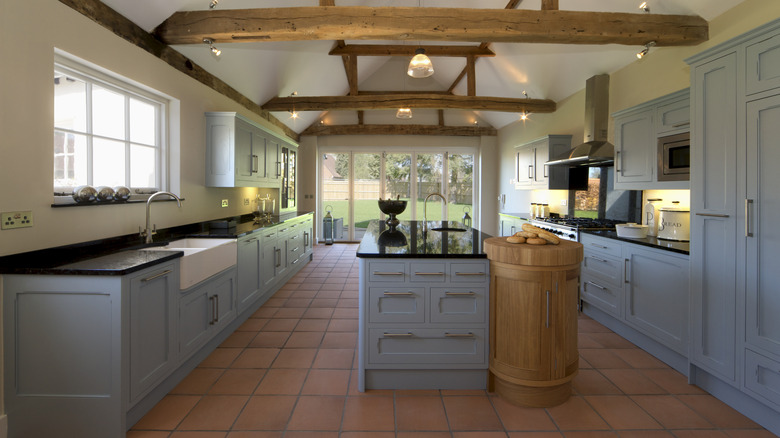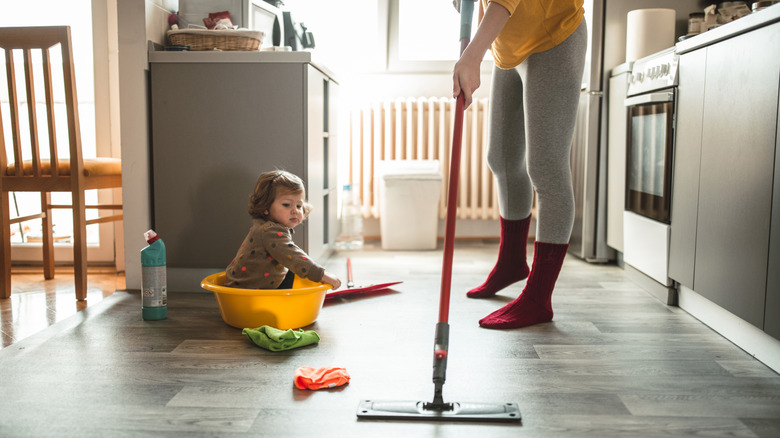The Worst Kitchen Flooring You Can Choose Is A Nightmare To Clean
Along with choosing the type of counters and designing the kitchen floor plan for maximum flow, choosing your floors is one of the most important decisions of designing a kitchen. The inevitable heart of the home, especially for serious home cooks, your kitchen sees more action in the way of foot traffic than anywhere else, so choosing a substrate that can take a beating and is easy to clean is a must. If you're designing or renovating a kitchen, do yourself a favor and steer clear of one flooring type notoriously difficult to keep clean — and that's any rough, porous type of tile.
While natural stone tiles such as marble, granite, slate quartzite, and limestone, or options such as brick or concrete, can be gorgeous and timeless, they're perhaps not the best choice for a busy home cook. Due to their imperfect, rustic nature, natural stone floor tiles have variations, pockmarks, and divots in the surface, creating a web of tiny crevices that can be a nightmare to keep clean. Furthermore, natural stone requires regular sealing to prevent moisture issues such as water absorption and staining. Instead, go for a ceramic or porcelain material if your heart's set on tile. Fired in a kiln and sealed over with glaze, this type of tile (commonly used in bathrooms and backsplashes) has a smooth-as-glass surface that's a breeze to wipe down and keep free of the dirt, crumbs, and splatters that collect in a well-loved kitchen.
Manufactured options are easier to clean
While natural stone, such as granite or quartzite, is increasingly popular as a sleek, modern countertop choice, it's not known for being particularly low maintenance. Consider the work required to keep a natural stone countertop in pristine condition: regular sealing, careful cleaning with specialized cleansers, and care when chopping and cooking to avoid dents, dings, and burn marks. Now multiply the surface area of a countertop to that of the entire square footage of a kitchen floor, and the immense upkeep required to keep an entire floor as good as new becomes clear.
Ceramic or porcelain options are by far the best choice for a tiled kitchen floor, which are available in a wide array of colors, patterns, and shapes. Also key to setting yourself up for low maintenance upkeep is ensuring grout lines are minimal, level, and well-sealed. For the same reason why tiled countertops with thick grout lines have completely gone out of fashion, a floor with a grid of grout lines to keep clean is an immediate headache. Choose larger tiles to minimize the amount of grout, or consider looking into other flooring options altogether if cleanliness and durability are your main considerations. A simple hardwood floor is easy to mop, sweep, and steam, for example, and modern, luxury vinyl tiles are known for being both stylish and easy to keep sparkling.

